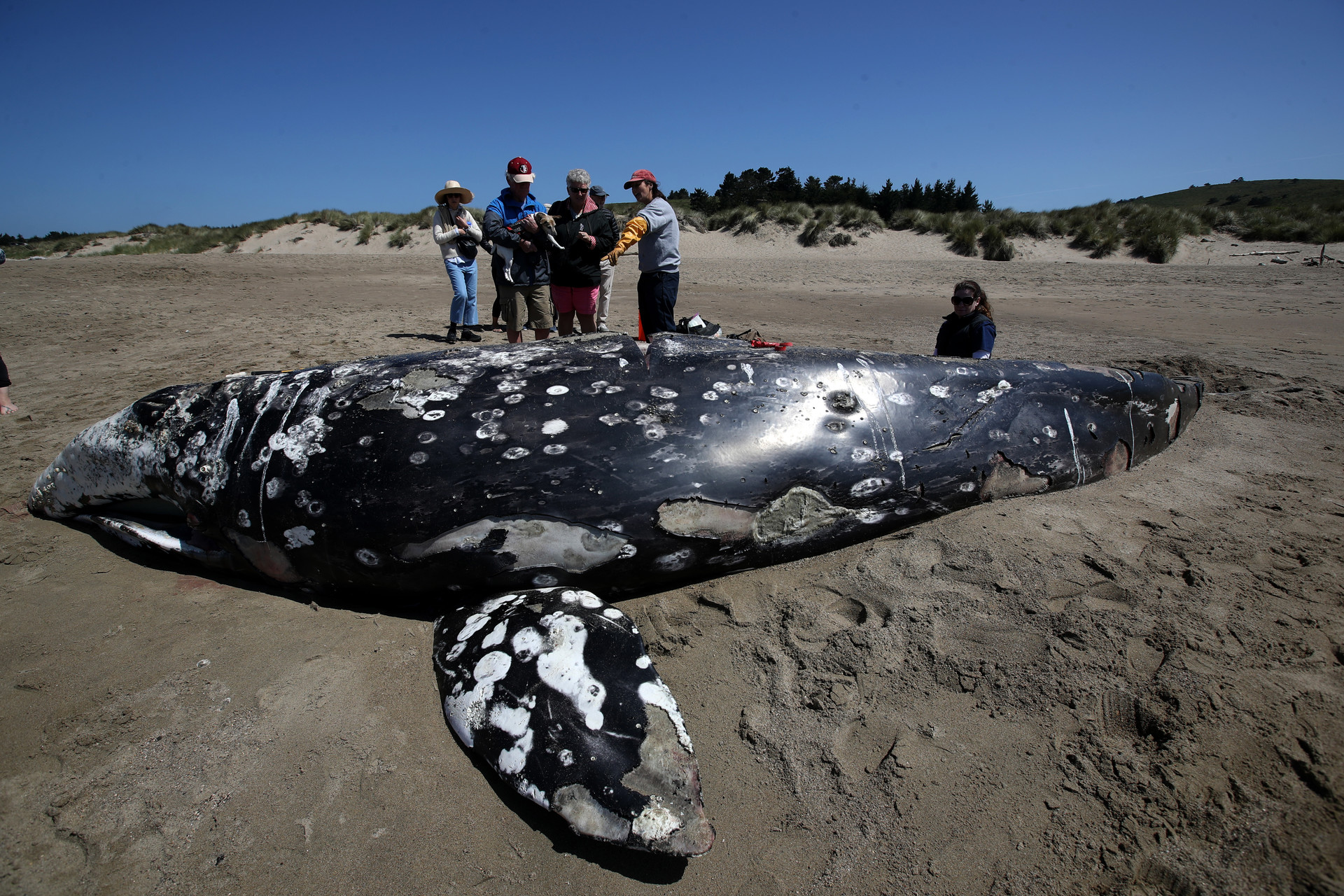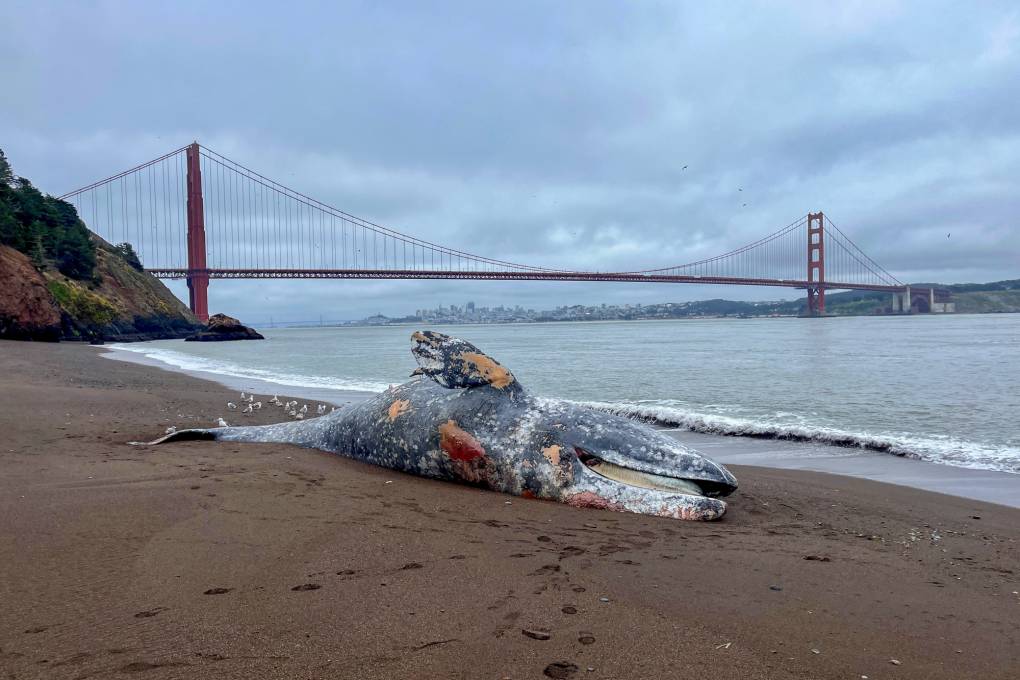While experts have yet to determine a cause of death for many of the whales due to location and state of decay, it is suspected that at least six of the gray whales died as a result of blunt force trauma caused by vessel or boat collisions. One gray whale that died in April, for example, was found with six fractured vertebrae.
Other necropsies have turned up inconclusive results.
Still, Pemberton said it’s different from an unusual mortality event. Despite the high number of recorded gray whale fatalities, the compressed area that the whales are in makes it less concerning, she said.
The San Francisco Bay is relatively small compared to the whales, Pemberton said. It’s also an area with frequent cargo ship and boat traffic, making it particularly dangerous for large aquatic animals. In the case of unusual mortality events, such as the ones in 2019 and 2021, spikes in the mortality rate of whales were seen across a larger geographic area and the causes of death were harder to determine, she added.
As of now, the number of whale sightings has gone down by nearly 50% in the last few days, Pemberton said. It’s likely that many of them are preparing to continue migrating toward Alaska and will be gone in the next few weeks.
She recommends that people operating ships move cautiously until then and report any whale sightings to vessel traffic and ferry operators. People can also call the Marine Mammal Center if they suspect they’ve seen a whale.
“We have a very unique and extraordinary opportunity to see the migration of whales right here off of our coast,” Pemberton said. “People should be mindful. … [The whales] have every right to be here as much as anything else, so we should come from a place of compassion.”



